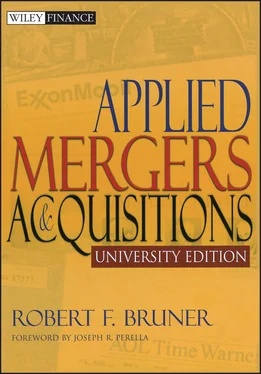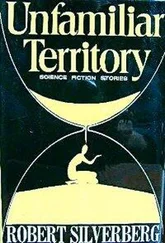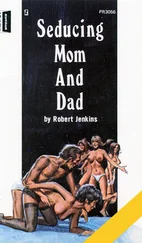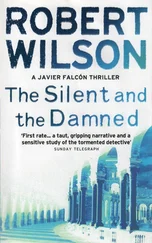In large part, Disney brought the unsolicited tender offer upon itself. Since the death of the founder, Walt Disney, in 1966, the firm had invested heavily in projects that failed to provide an adequate return. This led to a depressed share price. But the firm also retained assets such as a film library and valuable raw land in Florida that might be sold at a high profit. Steinberg saw this opportunity to buy Disney, restructure the firm, and earn a sizable return.
One significant influence in this problem was the intrinsic value of Disney. Before the hostile bid, Disney’s shares were trading around $47.50 apiece. Steinberg revealed in a filing with the SEC that he paid an average of $63.25 per share to acquire a toehold stake in Disney before mounting his hostile bid. This suggested that he estimated the true value of Disney to be something greater than his cost basis. The estimates of securities analysts at C. J. Lawrence ($64.00 to $99.00/share) and Goldman Sachs ($75.00/share) supported the views that Steinberg did not overpay for his shares and that the shares might be worth considerably more than his cost. The disparity among the valuations existed simply because Disney was worth one thing on a business-as-usual basis and something much higher if restructured.
Duties of Disney’s CEO and Board
Ron Miller, the CEO of Disney, was Walt Disney’s son-in-law. He was seen by many as the torchbearer for his father-in-law’s artistic and corporate vision. Unfortunately, as neither an artist nor an experienced theme-park professional, he carried none of the cachet of Walt Disney’s persona. Miller was a former professional football player who as CEO was greatly expanding the firm’s activities in real estate development. In the hostile tender offer, Miller confronted the dilemma of whether to serve Walt’s vision or the interests of shareholder value maximization. Legal obligation of the board and CEO rested on the latter.
It is uncertain how employees or suppliers might fare after a takeover by Saul Steinberg, but his predilection to break the linkage between films and theme parks might lower the enjoyment for customers. On balance, greenmail to preserve the status quo might serve the interests of these groups. As for shareholders, circumstances might exist in which they would be better off after the greenmail payment even if they were discriminated against, their agents acted in self-interest, and the action was not freely taken. A decision involves weighing the evident costs of greenmail versus the potential benefits. One might argue that to place a price on discrimination or the loss of free choice is impossible and that managerial self-interest is always bad. Yet, in many ways every day, individuals submit to discrimination or loss of choice to enhance their own welfare. Furthermore, managerial self-interest is not harmful per se to shareholders; managerial and shareholder self-interest undoubtedly coincide in a wide range of decisions.
The key question is whether Disney’s shareholders would receive any benefits to offset the costs of greenmail. The facts in the Disney case imply that management may have had an estimate of the intrinsic value of the firm that was materially higher than the ex ante share price or than a potential greenmail price per share. Under this circumstance, any repurchase of shares at a price less than intrinsic value will transfer wealth from the selling shareholders (i.e., the greenmailer) to the remaining public shareholders. The total wealth transferred depends on the difference between what the greenmailer (e.g., Steinberg) would have received had he bought and held versus what he actually received. If the wealth transfer is positive and material, Ron Miller might be justified in paying greenmail.
Possible Engagement with the Other Side
U.S. securities laws limit the extent to which the opposing sides in a hostile takeover contest can engage each other. Material developments mentioned in any conversation with the counterparty may need to be disclosed in public filings with the SEC. This constrains what can be said directly. But through emissaries, it was possible to negotiate a disengagement of the hostile action through a greenmail payment.
Long-Term Validity of the Action
The consequences judged over the long term probably appeared stark for employees and suppliers. If Miller fought and lost the firm to Steinberg, the company would be restructured, possibly ending the creative marriage of animated films and theme parks that Walt Disney consummated. As a believer in Walt’s vision, Miller probably felt that this would be a net loss for consumers and the entertainment industry. Greenmail, if it purchased sufficient time and operating flexibility, might grant the firm space in which to restructure itself and improve shareholder welfare. Doing so would give the CEO and directors discretion over how to restructure and realize greater shareholder value without sacrificing the unique operating virtues of the firm.
Miller had at least two alternatives to paying greenmail. One was to announce and execute a restructuring of the firm along the lines the raider would have to do to unlock latent value. This move would allow both the raider and the public to participate in the benefits. The second alternative was to offer to repurchase shares from the public instead of the greenmailer, as happened in the case of T. Boone Pickens’s attempted raid on Unocal. This would siphon cash to the public at the expense of the raider and enhance the freedom of choice of the public shareholder: He or she could elect to receive the greenmailer’s price per share or hold onto the shares in hopes of eventually receiving the intrinsic value per share. The decision to pay greenmail versus the alternatives ultimately depends on the wealth-creation/wealth-transfer effects each choice may have.
The payment of greenmail is routinely condemned by analysts, investors, editorial writers, and public officials. Stock prices usually fall after greenmail is paid. Greenmail payment takes a target company “out of play” (i.e., it removes the immediate threat of takeover). Terminating the takeover process induces frantic selling by arbitrageurs. The market in the firm’s stock is equilibrating away from highly opportunistic clientele back toward long-term investors. Moreover, investors cannot know as much as managers about a firm’s prospects. The problem is essentially one of signaling or investor relations, which, by and large, firms do poorly. Even if management never talks to shareholders, however, and instead waits for intrinsic value eventually to become manifest in operating performance, paying greenmail still makes economic sense if the wealth transfer to the remaining shareholders is positive.
Should Disney pay greenmail to Saul Steinberg? Various perspectives would seem to support it. Focusing on shareholder welfare, assume that (1) the price paid by Walt Disney Productions per Steinberg share is less than the intrinsic value, (2) Disney makes realizing the intrinsic value for remaining shareholders a top priority (via operational changes and better investor relations), and (3) the effect on share price is superior to restructuring or other defenses; the result then is an economic gain for the remaining shareholders of Disney. What should the price be? It should be as low as possible, consistent with an incentive for Steinberg to sell—certainly no higher than the estimated intrinsic value. Raiders and arbitrageurs look for annualized rates of return above 50 percent. Assuming Steinberg bought his shares on March 1, 1984, his holding period to the date of the case was 103 days. Thus, he would seek an interim gain of 14 percent in order to achieve an annualized gain of 50 percent. Steinberg’s apparent cost basis was $63.25, suggesting a greenmail price of $72.11 (114 percent of cost).
Читать дальше












